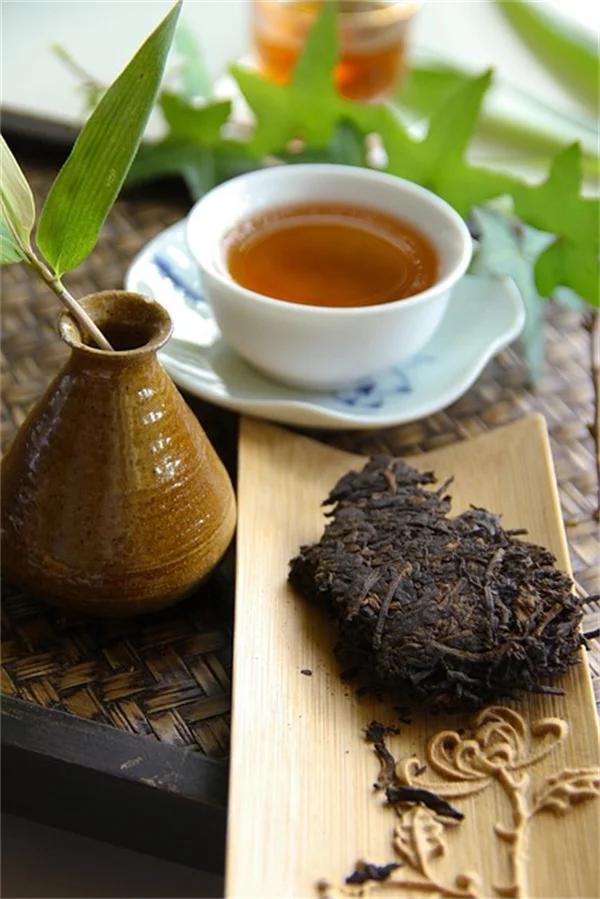Advertisement
Can virtual reality help kids with needle anxiety? The answer is a resounding yes! A groundbreaking study from Hong Kong shows VR headsets can slash kids' pain and fear during shots by up to 30%. I've seen firsthand how terrified kids get around needles - my nephew used to hide under chairs at the mere sight of a syringe. But this new research proves we've finally found a game-changing solution that actually works.Here's why this matters for your family: When children wear VR headsets during procedures like vaccinations, they report significantly less pain and anxiety compared to traditional methods. Even better? The whole process takes 2 minutes less on average - meaning less struggle for you and your child. We'll break down exactly how this works and share practical tips you can use at your next doctor's visit.
E.g. :Heart Attack Survival Rates Soar: Why Heart Disease Still Kills More Americans
- 1、Why Kids Hate Needles (And How VR Can Help)
- 2、Beyond VR: Other Creative Distraction Techniques
- 3、The Role of Medical Play in Reducing Fear
- 4、When Technology Meets Comfort
- 5、The Bigger Picture: Changing Medical Culture
- 6、FAQs
Why Kids Hate Needles (And How VR Can Help)
The Needle Problem We All Face
Let's be honest - nobody likes getting shots. I still remember hiding behind my mom when I was 5 to avoid the flu vaccine. Turns out, I wasn't alone. Research shows about 25-50% of children have significant needle fear.
But here's some good news: scientists found a surprisingly fun solution - virtual reality headsets. Imagine your kid playing doctor games in VR while getting their shots, completely distracted from the needle. Sounds better than screaming in the doctor's office, right?
How The VR Study Worked
The Setup That Changed Everything
The researchers at The Chinese University of Hong Kong tested 149 kids aged 4-12 getting blood drawn. They split them into two groups:
| Group | What They Got | Average Procedure Time |
|---|---|---|
| Regular Care | Comforting words from nurses | 6:30 minutes |
| VR Group | Interactive VR experience | 4:30 minutes |
The VR wasn't just watching cartoons - it was specially designed for each age group. Younger kids saw friendly characters explaining why shots are important, while older kids actually got to play as doctors in the game!
Why This Approach Works Better
Here's the genius part - the VR did two things at once:
1. It distracted kids completely (no staring at scary needles)
2. It taught them why they needed the procedure
As Professor Wong explained: "We think it's important to prepare patients and let them know what to expect. This combination of distraction and education really helps ease anxiety."
 Photos provided by pixabay
Photos provided by pixabay
The Amazing Results You Should Know
Less Pain, Less Fear
The kids using VR reported way less pain and anxiety. But here's something even cooler - the procedures went 2 minutes faster on average! That's 30% less time in the chair.
Did you know anxiety actually makes pain feel worse? When we're scared, our brains become hyper-sensitive to pain signals. That's why calming kids down helps so much with needle procedures.
What About Heart Rates?
The researchers checked heart rates and stress hormones too. While the VR group showed slightly better numbers, the real difference was in how the kids felt about the experience. Sometimes what matters most isn't the biology - it's whether a child leaves smiling instead of crying.
Why Kids React Differently Than Adults
The Magic (And Fear) Of Childhood
Ever wonder why kids freak out more about shots? It's not just being "dramatic." Children's brains literally process fear differently. As Dr. Molinero explained: "Kids might imagine their arm will fall off from a shot or turn into a zombie!"
Here's the key difference: adults understand that temporary pain leads to long-term health benefits. But for kids? That needle might as well be a monster under the bed.
They Can't Tell Us What's Wrong
Another big issue? Kids often can't explain their fears. While adults might say "I'm nervous about the pain," a child just knows they're scared and hate everything about the doctor's office.
What You Can Do At Home
VR Isn't Everywhere Yet - Try These Instead
Since most clinics don't have VR yet, here are 9 proven ways to help your anxious child:
- Bring their favorite stuffed animal
- Play games on your phone together
- Sing songs or tell silly jokes
- Practice slow breathing like blowing bubbles
- Explain what's happening in simple terms
- Give lots of praise and high-fives
- Bring headphones with calming music
- Let them pick a small reward afterward
- Stay calm yourself (kids pick up on your nerves!)
The Parent Factor
Here's something surprising - parents' anxiety affects kids too! The researchers found that when moms or dads were nervous, their children became even more scared. That's why they're now developing VR for parents and kids together.
 Photos provided by pixabay
Photos provided by pixabay
The Amazing Results You Should Know
More Than Just Needles
Could this VR approach help with other medical procedures? Absolutely! The same distraction techniques could work for:
- Dental visits
- Cast removals
- Stitch removal
- Allergy testing
Imagine if every stressful medical moment could feel like playing a game. That's the future this research is building toward.
Your Next Doctor Visit
Next time your child needs shots, ask if they offer VR distraction. If not, try bringing your own tablet or phone with their favorite show. The key is engagement - the more focused they are on something fun, the less they'll notice the needle.
Remember that time I hid from shots? I wish we had VR back then. Maybe I wouldn't have knocked over that doctor's tray of instruments in my panic... but that's a story for another day!
Beyond VR: Other Creative Distraction Techniques
The Power of Storytelling During Procedures
Why Stories Work Like Magic
You know how kids get completely lost in their favorite bedtime stories? We can use that same focus during medical procedures. Nurses at Boston Children's Hospital have this awesome technique where they make up interactive stories with the child as the hero.
For example, they might say: "Okay superhero, we need to put this special shield on your arm to protect you from the bad germs. It might tingle for just a second while it activates!" Suddenly the shot becomes part of an adventure rather than something scary.
Creating Personalized Medical Stories
Some hospitals now create custom storybooks for kids before procedures. These books show photos of the actual hospital, the doctors they'll meet, and explain each step in a fun way. One mom told me her daughter carried her "Super Brave Hospital Adventure" book everywhere for weeks after her shots!
Music Therapy: More Than Just Background Noise
The Science Behind the Beats
Did you know certain types of music can actually lower pain perception? Researchers found that when kids listen to their favorite songs during shots, they report up to 40% less pain. It's not just distraction - the rhythm literally changes how our brains process discomfort.
Here's a cool experiment you can try at home: have your child rate their "ouch level" during different activities while listening to different music styles. You might discover they're more tolerant when jamming to Disney tunes versus classical!
Creating Medical Playlists
Many children's hospitals now help kids create personalized procedure playlists. The key is choosing songs that:
- They know all the words to
- Have positive memories attached
- Are slightly upbeat (slow songs can make anxiety worse)
The Role of Medical Play in Reducing Fear
 Photos provided by pixabay
Photos provided by pixabay
The Amazing Results You Should Know
How Pretend Play Builds Confidence
That plastic doctor kit collecting dust in your playroom? It's actually one of the most powerful tools for medical anxiety! When kids play doctor at home, they're rehearsing real medical scenarios in a safe environment.
I've seen toddlers who used to scream at the sight of a stethoscope become fascinated with medical equipment after playing with toy versions. It's like their brains go "Oh, this isn't so scary when I'm in control!"
Medical Play Before Procedures
Forward-thinking hospitals now offer medical play sessions where kids can:
| Activity | Benefit |
|---|---|
| Put bandages on dolls | Normalizes medical materials |
| Use toy syringes | Reduces fear of needles |
| Wear doctor costumes | Builds sense of control |
The Surprising Benefits of Medical Puppets
Why Kids Open Up to Puppets
Ever notice how kids will tell a stuffed animal things they'd never tell an adult? Child life specialists use this phenomenon with medical puppets that have "boo-boos" just like the child. The puppet gets treatment first, showing the child what to expect.
One specialist told me about a boy who refused to talk about his upcoming surgery - until the puppet "confessed" it was scared too. Suddenly the boy became the brave expert, explaining everything to comfort his puppet friend!
DIY Puppet Therapy at Home
You don't need fancy hospital puppets to try this. Any stuffed animal can become a "patient." Before your child's next doctor visit, have them:
- Give their toy a checkup
- Practice taking deep breaths together
- Reward the toy for being brave
This simple play builds familiarity and confidence.
When Technology Meets Comfort
Augmented Reality: The Next Frontier
AR vs VR for Medical Distraction
While VR completely immerses kids in another world, augmented reality (AR) adds fun elements to the real environment. Imagine pointing a tablet at your child's arm and seeing colorful butterflies land where the needle will go!
Children's National Hospital is testing an AR app that transforms medical tools into friendly cartoon characters. A syringe becomes a "sleepy juice squirter" and bandages turn into "magic stickers."
The Comfort of Familiar Faces
Some of the most effective AR apps use characters kids already love. Could getting a shot from Elsa feel different than from a stranger in a white coat? Research suggests yes! When familiar characters "help" with procedures, kids show significantly less distress.
Smartphone Apps That Actually Help
Beyond Mindless Games
While any game can distract, specially designed medical apps do more. My favorite is "Pokemon Smile" - it uses facial recognition to encourage kids to stay still during dental procedures while "catching" virtual creatures.
Other great options include:
- "Buzzy the Bee" (uses vibration therapy)
- "ShotBlocker" (explains vaccines through stories)
- "Calm Kids" (guided breathing exercises)
What Makes a Good Medical App?
Not all apps are created equal. The best ones:
1. Teach real coping skills
2. Don't overstimulate
3. Can be used with one hand
4. Don't have scary elements
5. Offer positive reinforcement
The Bigger Picture: Changing Medical Culture
Why Pediatric Design Matters
From Scary to Friendly Spaces
Have you ever noticed how most doctor's offices look the same? White walls, scary posters, uncomfortable chairs. But innovative hospitals are completely rethinking their spaces to reduce anxiety.
The new Children's Hospital of Philadelphia has:
- Procedure rooms that transform into underwater worlds
- Ceiling tiles with hidden pictures to find
- Interactive walls that respond to touch
- Calming color schemes based on child psychology research
Small Changes, Big Impact
You don't need a million-dollar renovation to make a difference. Simple swaps like:
- Covering needles with cute stickers
- Using scented bandages
- Letting kids choose treatment locations ("Left arm or right?")
Can dramatically change the experience.
Training Healthcare Providers Differently
The Power of Child Life Specialists
These amazing professionals are trained specifically in reducing medical trauma in kids. They use play, education, and advocacy to make healthcare less scary. Yet shockingly, many hospitals still don't have them due to budget constraints.
Isn't it time we made emotional care as important as physical care? Studies show hospitals with child life programs have:
- Shorter procedure times
- Less need for sedation
- Better long-term attitudes toward healthcare
Rethinking Traditional Approaches
Some outdated practices actually increase fear without realizing it. For example:
- Holding kids down (creates trauma)
- Surprise procedures (no time to prepare)
- Minimizing fears ("Don't be a baby")
The most progressive hospitals are training all staff in trauma-informed care techniques.
E.g. :Virtual Reality Interventions for Needle-Related Procedural Pain ...
FAQs
Q: How exactly does VR help with needle anxiety in children?
A: Virtual reality works by completely engaging a child's attention during medical procedures. Instead of focusing on the scary needle, kids get immersed in interactive games or educational content. The Hong Kong study found this dual approach - distraction plus education - was incredibly effective. For younger kids (4-7), friendly cartoon characters explain why shots are important. Older kids (8-12) actually get to play as doctors in the game! This isn't just about hiding the procedure - it's about transforming the entire experience into something positive and even fun.
Q: What age group benefits most from VR distraction during shots?
A: While all children in the study (ages 4-12) showed improvement, the youngest kids benefited most from VR distraction. Researchers believe this is because younger children naturally have higher anxiety about medical procedures. Their developing brains process fear differently - they might imagine extreme outcomes like their arm falling off! The VR experience helps break this cycle by keeping them engaged with age-appropriate content. Interestingly, the additional gameplay for older kids didn't show extra benefits, suggesting simple distraction works just as well.
Q: How much does VR actually reduce pain during needle procedures?
A: The results are impressive - children using VR reported significantly lower pain levels on standardized scales. Here's why this happens: anxiety actually makes pain feel worse by putting our nervous system on high alert. When kids are calm and distracted, their bodies don't amplify the pain signals as much. The study also found procedures were 30% faster with VR (4:30 minutes vs 6:30 minutes), meaning less time for anxiety to build. While heart rate and cortisol levels showed modest improvements, the biggest difference was in how the children themselves rated their experience.
Q: Can parents use similar techniques at home without VR equipment?
A> Absolutely! While VR headsets are becoming more common in clinics, there are plenty of effective alternatives you can try now. Bring your child's favorite stuffed animal or download interactive games on your phone. Sing songs together or tell silly jokes to keep them distracted. Practice slow breathing techniques beforehand (try "blowing bubbles" breaths). The key is active engagement - the more focused your child is on something else, the less they'll notice the needle. And remember - your calmness matters too! Kids pick up on parents' anxiety, so take deep breaths and stay positive.
Q: Will this VR approach work for other medical procedures besides shots?
A: The researchers believe this technology has huge potential beyond vaccinations. Similar distraction techniques could help with dental visits, cast removals, stitch removal, or allergy testing. The team is even developing VR experiences for parents and children together, since parental anxiety affects kids too. Imagine transforming stressful medical moments into interactive learning experiences - that's the future this research is building toward. As the technology becomes more affordable, we'll likely see VR used for all sorts of pediatric procedures where anxiety is a factor.







